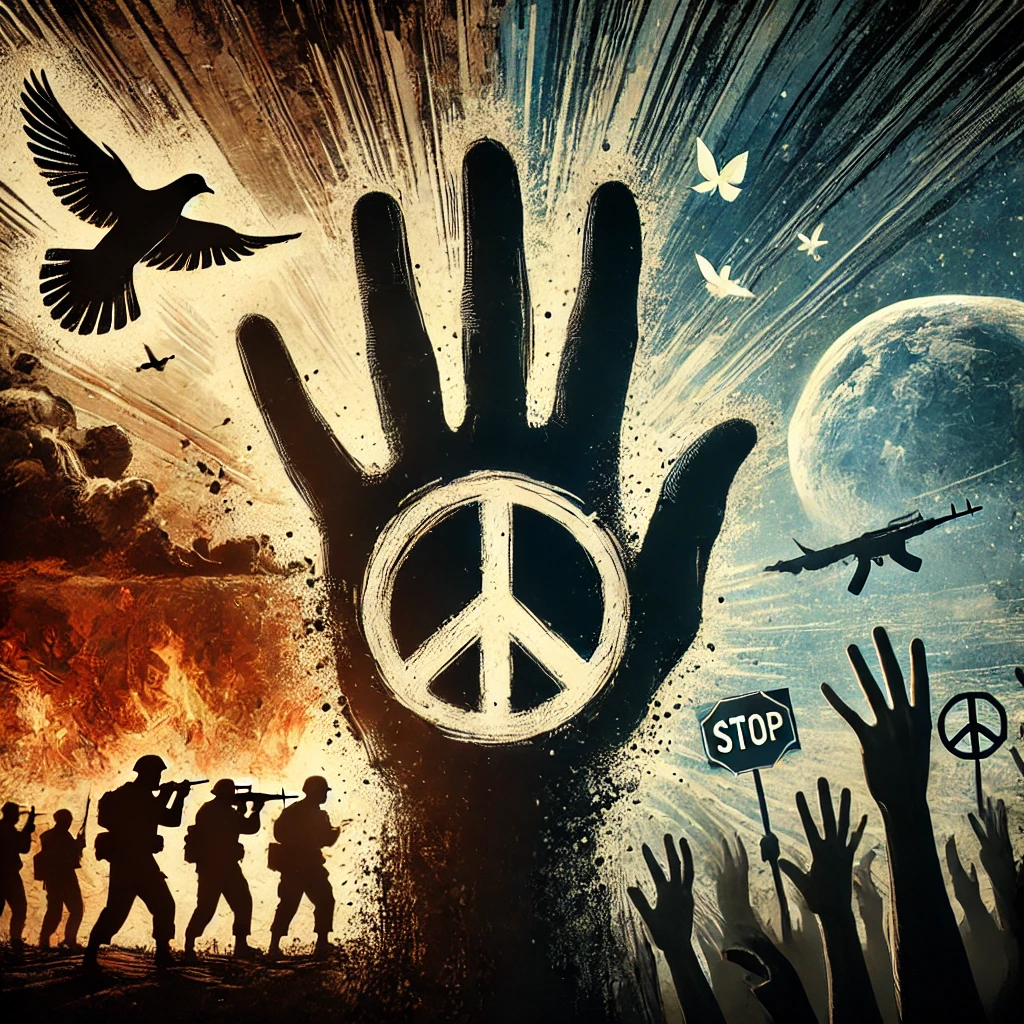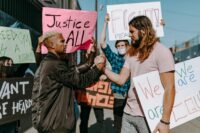This blog was originally published on December 18, 2012, on the New Existentialist Blog. It was republished here after the New Existentialist Blog was discontinued.
“The citizens of a city are not guilty of the crimes committed in their city; but they are guilty as participants in the destiny of [humanity] as a whole and in the destiny of their city in particular; for their acts in which freedom was united with destiny have contributed to the destiny in which they participate. They are guilty, not of committing the crimes of which their group is accused, but of contributing to the destiny in which these crimes happened.”
~ Paul Tillich (1957)
“I call a lie: wanting not to see something one does see, wanting not to see something as one sees it…. The most common lie is the lie one tells to oneself; lying to others is relatively the exception.”
~ Nietzsche (1894/1990)
“Twenty seven dead in a Connecticut school.” Like many, I read with horror. I turned on the TV, my eyes filled with tears, and I considered picking my sons up early from school. But my sadness quickly turned to anger. In the United States, we love to talk about supposedly being the greatest country in the world. Yet, gun violence, mass killings, and our prison population are among the highest in the world. We are living in a dangerous delusion. I am not just angry at the shooter in Connecticut, but at our society for continuing to live in this mass delusion of our greatness while doing little to address the depth of our depravity.
What Existential Psychology Has to Say
One of the first things that drew me to existential psychology was its willingness to face evil without relegating evil to the other. Instead, it recognized that evil was a potential inherent in the human condition, a potential we all bear. For Rollo May (1969; 1982), the root of evil is in the daimonic, which he defines as, “any natural function that has the power to take over the whole person” (May, 1969, p. 65). Our emotional pain and suffering can easily become such a force. The daimonic, which bears conceptual similarity to Jung’s shadow, is not necessarily a destructive force. The daimonic can be a source of destruction and evil, but can also be a source for growth, creativity, and beauty.
What distinguishes whether the daimonic is used destructively or constructively is largely dependent upon our awareness and what we do with that awareness. When we repress, deny, or distort it, the daimonic becomes more powerful and the potential for evil grows (Hoffman, Warner, Gregory, & Fehl, 2011). This is why, from an existential perspective, the willingness to look at our dark side is so important. It is not just that such self-examination can lead to a more fulfilled life; it is also an ethical imperative.
For the betterment of ourselves and society, we must temper our belief in human potential with an honest accounting for our potential for evil. As William James (1902/1997) stated:
…there is no doubt that healthy mindedness is inadequate as a philosophical doctrine, because the evil facts which it refuses positively to account for are a genuine portion of reality; and they are after all be the best key to life’s significance, and possibly the only openers of our eyes to the deepest levels of truth. (p. 140)
The Exploitation of Tragedy

The tragedy of the school shootings is already transitioning to the search for answers. Yet, we will only find the answers we are willing to find. Religious leaders already ignorantly have proclaimed the cause was removing prayer from public schools while politicians have begun exploiting the tragedy with partisan politics. Blame is much easier to tolerate than self-reflection. Without doubt, the “mental illness” of the shooter will carelessly be blamed as the cause.
The tragedy of the school shootings is already transitioning to the search for answers. Yet, we will only find the answers we are willing to find. Religious leaders already ignorantly have proclaimed the cause was removing prayer from public schools while politicians have begun exploiting the tragedy with partisan politics. Blame is much easier to tolerate than self-reflection. Without doubt, the “mental illness” of the shooter will carelessly be blamed as the cause.
Most attempts to explain evil do so by identifying it outside of our individual and social identity. Evil is “them,” not “me” or “we.” If we can explain a school shooting through sin, political failure of the “other” party, or mental illness, we feel safer. If we can place the sole blame on the shooter, then we do not have to bear the brunt of the collective responsibility to which Tillich speaks. We ought hold the shooter responsible, but not in service of justifying our own irresponsibility. The etiology of violence is always more complicated than a single cause.
For instance, most people diagnosed with or meeting the criteria for mental illness are not violent. At most, mental illness may be a small contributing factor to violence, but never is it the sole cause. Violence is abnormal for those individuals diagnosed with mental illness and those who do not meet such criteria.
When we rush to diagnose these violent individuals, we quickly discount the other factors contributing to the violence. Whether perpetrated by someone diagnosable with a mental illness or not, there are always many factors that come together leading up to the act of violence.
It is tragic that we do not consider the impact of the millions of people in the nonviolent majority diagnosed with mental illness when we rush to diagnose the shooter with some type of psychiatric disorder. Many of these clients feel ashamed to be categorized with the perpetrator, further intensifying the stigmatization of mental illness.
We do not consider that many will readily lump all people diagnosed with mental disorders into the category of “dangerous,” thus further isolating these individuals. Ironically, it is such isolation that often plays a major role in causing and maintaining the psychological suffering that is diagnosed as “mental illness.” Furthermore, it is likely that isolation often is a contributing factor to violence.
Collective Responsibility
The world will not become a safer place as long as we only look to the shooter for answers. It will not be a safer place until we are willing to look inside on a personal level, and a collective level. We need to honestly examine why more mass shootings happen in the United States than any other country in the world. We need to consider why our prison population dwarfs most other countries. We need to consider why other countries, such as China, are experiencing a rise in violence as they become more influenced by the West. Though not as prominent in the news media, the same day as the school shooting in Connecticut occurred, there was a mass stabbing in China in which 22 children were stabbed. Such occurrences that once were unheard of in China are becoming increasingly common.
An honest look at contributing factors of violence in the United States means considering what we hold precious, what comforts us, what entertains us, and what we enjoy, with an openness to acknowledge that these, too, may be factors contributing to violence. A few examples may help illustrate.
First, in the United States, many enjoy violent movies, television, video games, and music, but are these worth protecting if they contribute to violence and serve as a threat to our children’s safety? Yet, not all violence is equal. Violent shows tend to impact children more than adults and violence in which the individual identifies with the perpetrator of violence is more likely to contribute to violence (Huesmann, MoiseTitus, Podolski & Eron, 2003).
Furthermore, when parents can limit exposure to violence as well as talking with children about the realistic consequences of violence and empathy for the victims, the impact may be lessoned or even reversed (Hughes & Hasbrouck, 1996). In general, moderate exposure to violence that portrays the emotional consequences for victims (as opposed to the graphic portrayal of consequences) combined with discussion of the consequences and responses to violence are less likely to be harmful. However, rarely is exposure to violence managed in this way.
Second, many people in the United States enjoy gun ownership and are responsible with their guns. However, gun ownership is higher in the United States than anywhere in the world, and we have more gun violence than anywhere in the world. Rarely does gun ownership save anyone’s life in the United States, and never has it been necessary to protect us from a tyrannical leader. However, guns regularly and frequently are used for violent crime. It may not be necessary to completely eliminate gun ownership to decrease violent crime; stricter laws on what guns can be owned, who has access to them, and how guns need to be stored may suffice. It seems evident that something, however, needs to change with gun control in the United States.
Lastly, economic disparity has regularly been connected to violent crime (Elgar & Aitken, 2011; Hsieh, 1993). At the same time, economic disparity in the United States continues at extreme levels. Are we willing to cash in an American dream that focuses on individual material success for one that places greater concern on social harmony and concern for others if it leads to significantly fewer victims of violent crime? In stating this, I am not advocating for socialism, but rather a more balanced capitalism.
Conclusion
Our first priority in response to the tragedy of the school shooting in Connecticut needs to be individual and collective grieving for the children and their families. However, we also must not allow another tragedy like this to occur without us seeking to learn from it. Our grieving ought lead to a collective, honest reflection upon the causes of violence in the United States. From this reflection, we are called to make difficult decisions about what truths we are willing to accept and what choices we will make based upon these truths. My hope is that this time we, collectively, will be wiser in how we choose to respond to tragedy.
References
Elgar, F. J. & Aitken, N. (2011). Income inequality, trust, and homicide in 33 countries. European Journal of Public Health, 21, 241246.
Hsieh, C. (1993). Poverty, income inequality, and violent crime: A meta-analysis of recent
aggregate data studies. Criminal Justice Reviews, 18, 182202.
Hoffman, L., Warner, H. J., Gregory, C., & Fehl, S. (2011). Existential-integrative perspectives
on the psychology of evil. In J. H. Ellens (Ed.), Explaining evil (Vol. 3: Approaches, responses, solutions; pp. 263286). Praeger.
Huesmann, L. F., MoiseTitus, J., Podolski, C., & Eron, L. D. (2003). Longitudinal relations between children’s exposure to TV violence and their aggressive and violent behavior in young adulthood: 1977–1992. Developmental Psychology, 39, 201221.
Hughes, J. N. & Hasbrouck, J. E. (1996). Television violence: Implication for violence prevention. School Psychology Review, 25, 134151.
James, W. (1997). The varieties of religious experience. Touchstone (Original work published in 1902)
May, R. (1969). Love and will. Delta.
May, R. (1982). The problem of evil: An open letter to Carl Rogers. Journal of Humanistic Psychology, 22, 1021.
Nietzsche, F. (1990). The antichrist. In R. J. Hollingsdale (Ed. & Trans.). Twilight of the idols/The antichrist. Penguin Books. (Original work published in 1894)
Tillich, P. (1957). Systematic theology (Vol. 2). University of Chicago Press.
~ Louis Hoffman, PhD
Note: Although this site is owned by Louis Hoffman, it supports the Rocky Mountain Humanistic Counseling and Psychological Association (RMHCPA), which is a 501(c)3 nonprofit organization. As an Amazon Associate, RMHCPA earns from qualifying purchases made through the links on this page.







